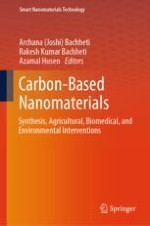2024 | OriginalPaper | Chapter
Role of Carbon Nanomaterials in the Prevention of Plant Disease
Authors : Mayur Mukut Murlidhar Sharma, Divya Kapoor, Pankaj Sharma, Azamal Husen
Published in: Carbon-Based Nanomaterials
Publisher: Springer Nature Singapore
Activate our intelligent search to find suitable subject content or patents.
Select sections of text to find matching patents with Artificial Intelligence. powered by
Select sections of text to find additional relevant content using AI-assisted search. powered by
